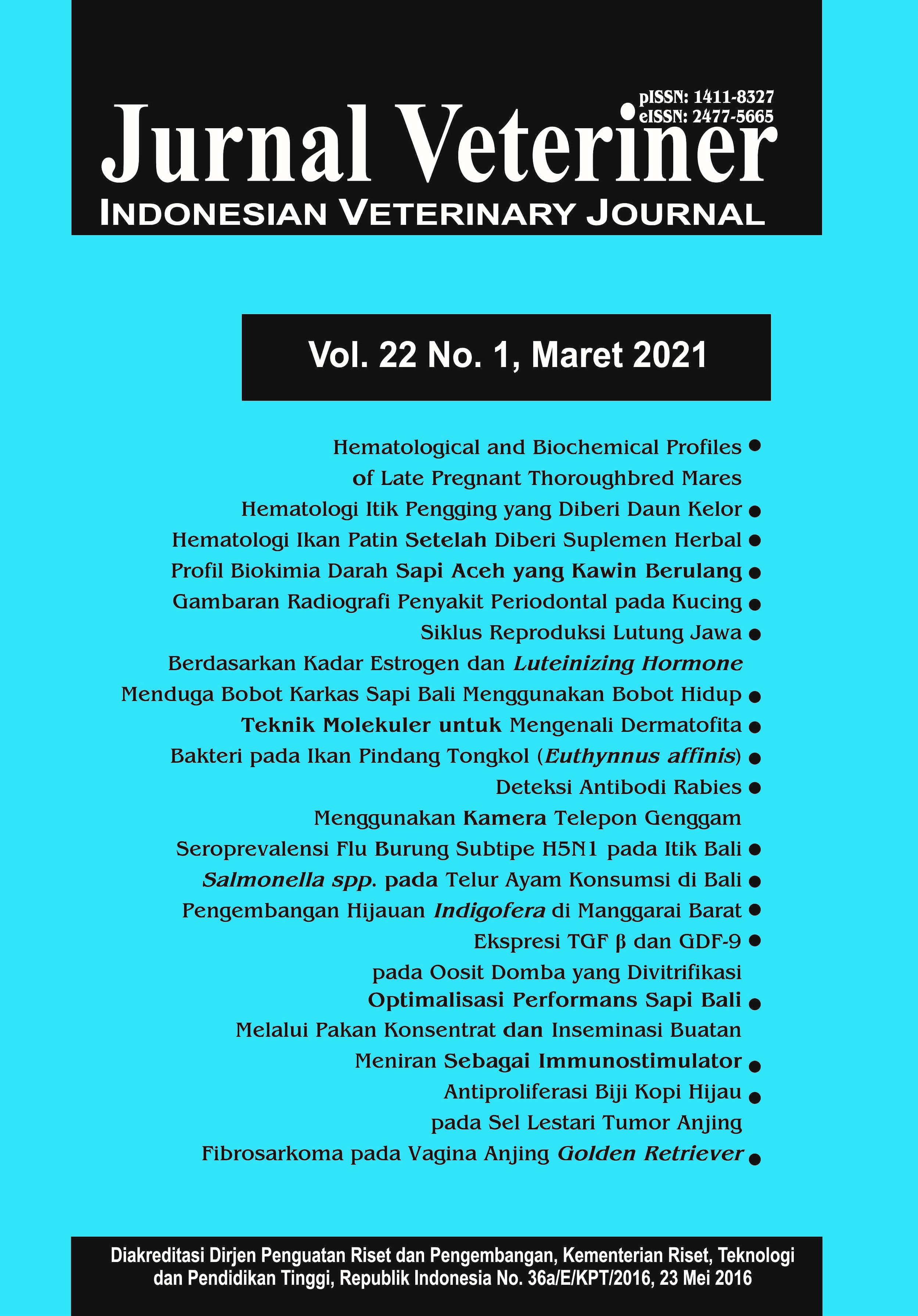Siklus Reproduksi Lutung Jawa (Trachypithecus uratus) Betina Berdasarkan Kadar Hormon Estrogen dan Luteinizing Hormone
REPRODUCTIVE CYCLE OF FEMALE JAVAN LANGUR (TRACHYPITHECUS AURATUS) BASED ON ESTROGEN AND LUTEINIZING HORMONE LEVELS
Abstract
Currently, the information about Javan langurs female reproductive cycle in both cycle length and hormonal patterns is still widely unknown. Meanwhile, this information can be used as a guide in determining the fertile period of Javan langurs to conduct mating with higher pregnancy rate. The purpose of this study was to determine the reproductive cycle of adult female Javan langurs based on estrogen and luteinizing hormone (LH) levels. The experimental animals was originated from Coban Talun forest in Batu, which was undergoing a rehabilitation program. Feces samples of two female Javan langurs were taken for 40 days. Examination of estrogen and LH hormone levels in the feces was carried out by the enzyme-linked immunosorbent assay (ELISA) method and then analyzed descriptively. The results showed that fluctuations in the graphs of the hormones estrogen and LH appeared on days 8 to 16 and days 30 to 40 which showed the existence of two reproductive cycles. Whereas younger langur showed a pattern of hormonal fluctuations that are less regular, making identification of the reproductive cycle difficult. Based from the results, we concluded that the reproductive cycle of female Javan langur was estimated about 24 days with a hormonal pattern consisting of the follicular phase, the ovulation period and the luteal phase.



















